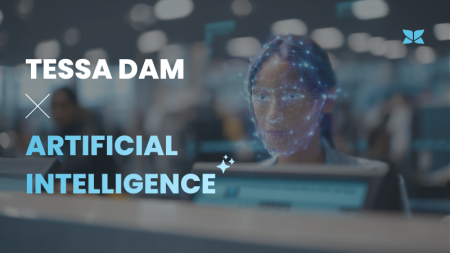Introduction
Software-as-a-Service (SaaS) has brought about a revolutionary change in the way software is delivered and used in recent years. Unlike traditional on-premises solutions where software is purchased and installed locally on computers or servers, SaaS allows the use of software over the Internet. This offers significant advantages in terms of cost, scalability, and accessibility. This article provides an overview of SaaS, its benefits and challenges, and focuses specifically on the role of SaaS in Digital Asset Management (DAM).
Fundamentals of SaaS
SaaS is a model of cloud computing services where applications are delivered over the Internet as a service. Users access the applications via web browsers, while the underlying infrastructure, middleware, application software, and data are hosted in a data center by the service provider. This model relieves companies from the need to purchase and maintain expensive hardware and software, allowing them to focus on their core competencies. The three best-known cloud services in the SaaS sector include:
Salesforce: Leading in CRM and known for its extensive customization and integration capabilities.
Microsoft Office 365: A comprehensive suite of productivity applications widely used in businesses.
Google Workspace: A collection of cloud-based productivity and collaboration tools used in many organizations.
Benefits of SaaS
Cost Efficiency: SaaS eliminates the need for large upfront investments in hardware and software. Companies instead pay a usage-based fee, often billed monthly or annually. This facilitates budget planning and reduces financial risks.
Scalability and Flexibility: SaaS solutions are highly scalable, allowing companies to expand or reduce their software resources as needed. This is especially beneficial for companies with seasonal fluctuations in their workload.
Accessibility and Mobility: Since SaaS applications are accessible over the Internet, users can access the software from anywhere with an Internet connection. This supports the increasing mobility of the workforce and promotes remote work and collaboration.
Automatic Updates: SaaS providers handle regular updates and maintenance of the software. This ensures that users always have the latest version of the application with the newest features and security updates.
Challenges of SaaS
Despite the many advantages, there are also challenges associated with using SaaS:
Data Security and Privacy: Since data is stored in the cloud, companies must ensure that their data is secure and compliant with privacy regulations. This requires a thorough review of the SaaS provider's security measures.
Vendor Dependency: Companies are heavily reliant on the reliability and business terms of the SaaS provider. Changes in pricing or service conditions can have significant impacts.
Internet Dependency: Accessing SaaS applications requires a stable Internet connection. In regions with poor Internet infrastructure, this can be a significant issue.
Distinction Between SaaS, PaaS, and IaaS
While SaaS (Software-as-a-Service) focuses on delivering software applications over the Internet, there are two other important cloud computing models that differ in the scope of services provided: Platform-as-a-Service (PaaS) and Infrastructure-as-a-Service (IaaS).
Platform-as-a-Service (PaaS): PaaS provides a development and runtime environment in the cloud. It offers developers the necessary tools and services to create, test, deploy, and manage applications without worrying about the underlying infrastructure. Examples of PaaS include Google App Engine and Microsoft Azure App Services. PaaS is ideal for developers who need a platform to efficiently develop and deploy their applications.
Infrastructure-as-a-Service (IaaS): IaaS offers basic computing resources such as virtual machines, storage, and networks over the Internet. It enables companies to rent and scale their IT infrastructure without investing in physical hardware. Well-known IaaS providers include Amazon Web Services (AWS), Microsoft Azure, and Google Cloud Platform (GCP). IaaS provides the greatest flexibility and control over IT resources, as users can install their own operating systems and applications on the rented infrastructure.
In comparison, SaaS is a fully managed solution where the provider manages the entire infrastructure, platform, and software. Users simply access the application over the Internet without worrying about the underlying technology. These three models offer different levels of management and control, allowing companies to choose the right model based on their specific requirements.
SaaS in Digital Asset Management (DAM)
Digital Asset Management (DAM) refers to the management of digital media resources such as images, videos, documents, and other digital content. Traditionally, DAM systems required significant investments in hardware and software as well as IT resources for management and maintenance. SaaS has also brought significant changes to this area.
SaaS-based DAM solutions enable centralized management and storage of digital assets, simplifying the organization, search, and reuse of content. With SaaS DAM solutions, teams can access and collaborate on the same digital assets from different locations, promoting efficiency and creativity in content creation and management. However, integrating SaaS DAM solutions with existing enterprise systems can be very complex. Therefore, it is important that the chosen solution can seamlessly integrate into the existing IT infrastructure.
Further advantages and disadvantages of SaaS in DAM, as well as a comparison with on-premises systems, can be found in our article "Comparison of SaaS and on-premises DAM systems: Advantages, disadvantages and application areas".
Conclusion
SaaS an attractive option for companies
SaaS has fundamentally changed the way companies use and manage software. The benefits of cost efficiency, scalability, and accessibility make SaaS an attractive option for companies of all sizes. In the area of Digital Asset Management, SaaS offers additional benefits such as centralized management and improved collaboration, although security and integration aspects must also be carefully considered. Overall, it is evident that SaaS makes a significant contribution to the digital transformation of companies.





